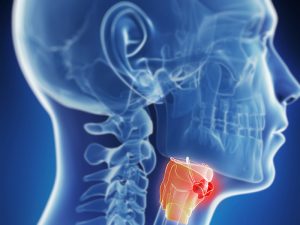Head and neck cancer
The rates of patients diagnosed with HPV-related head and neck cancer are rising annually. there will be extra cases of HPV-related head and neck cancer than HPV-related cervical cancer in the United States. Various researches have proved that most patients with this diagnosis are likely to be rid of their disease, placing an enhanced emphasis on quality of life and non-cancer outcomes in this community of survivors. The majority of cases diagnosed with HPV-related head and neck cancer are working-age adults and employment is a dangerous issue both financially and psychologically.

How can treatment for and neck and head cancer impact employment?
Treatment for head and neck cancer often implies a combination of chemotherapy and radiation given over a six to seven-week period, often known as concurrent chemoradiation or combined modality chemoradiation. This process is supposed toxic and can affect a patient’s ability to function normally including speaking, chewing, breathing, and swallowing. Many patients require various supportive medicines to get through processing including narcotics for pain and anti-nausea medications. Patients can lose on normal 10-15% of their weight within a few months and can suffer from severe fatigue and post-treatment malaise.
How did the treatment impact employment?
97% of patients had to change their job duties in some way from decreasing work, taking a break and then returning at a later date, or stopping altogether and not returning. 73 patients quit but ultimately returned to work after treatment, and they required a median of 14.5 weeks to return. This is higher than the 12 weeks currently approved according to the Family Medical Leave Act (FMLA).
Eight patients quit working collectively and never went back. Eight patients stopped working during therapy and never returned to work. Aside from younger age predicting more time off before returning to work, we did not find a patient, treatment, or disease factor that accounted for needing extra time off.
What happened to these patients?
The number of patients who returned to work continued. At almost two years from the completion of therapy, 85% of the original 102 patients were working for pay. Overall, survivors were performing very well in terms of quality of life with the bulk not having any major limitations secondary to their treatment.
There was a group of survivors who were dissatisfied with their ability to work. Any were working but not happy with their skills, while others were looking for work. Compared to those who were happy with their abilities, those that were unsatisfied were more likely to have more functional problems and more head and neck-specific late toxicities from their treatment.
What does this mean for patients and providers?
I believe that this study gives some direction for patients and providers as they prepare for chemoradiation to treat HPV-related head and neck cancer. Hopefully, most patients will return to work, but realistic expectations of the ability to work will help in treatment planning. Employment is another reason why managing late toxicities remains an important aspect of optimal care for head and neck cancer survivors.
Looking for Cancer Treatment Contact Dr. Tushar Mule is a highly experienced Cancer Specialist in Aurangabad. He is a Specialist in Head and Neck, Lung, Breast, Prostate, Bone Gastrointestinal, Genitourinary & Hematolymphoid Cancer, and also Specialist in Chemotherapy Target & Immunotherapy.